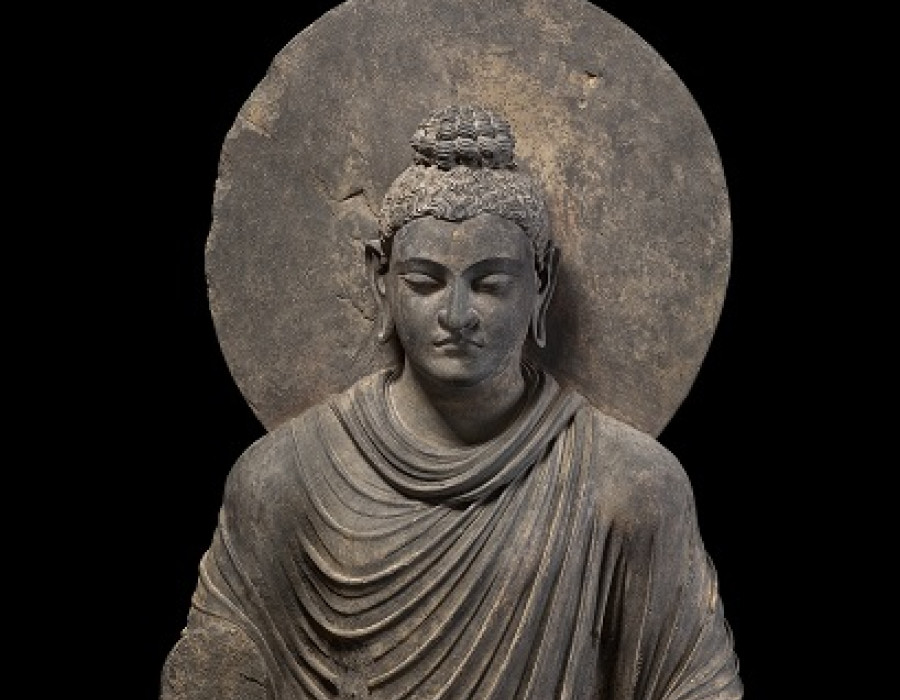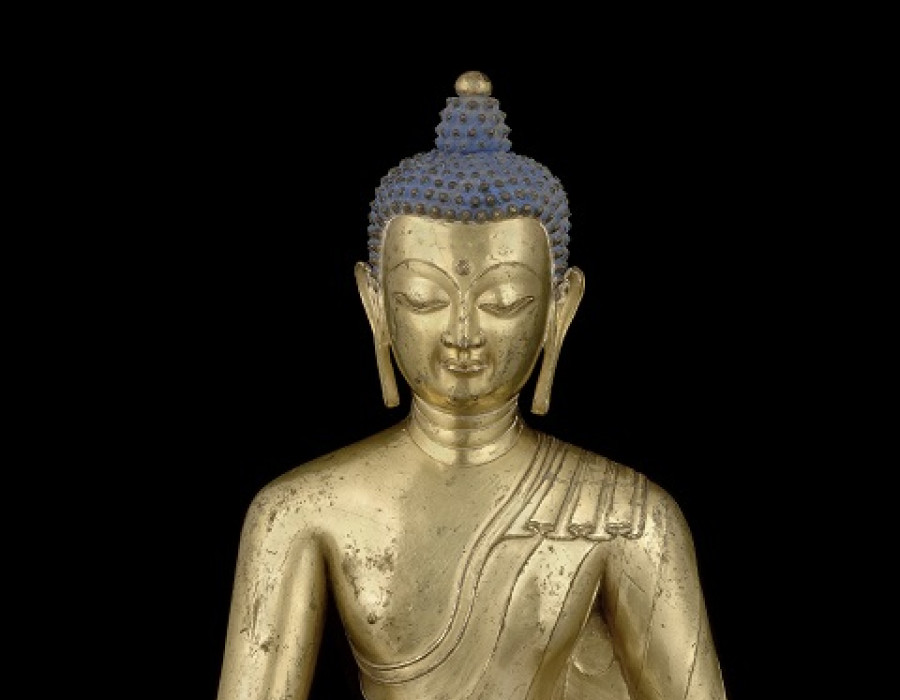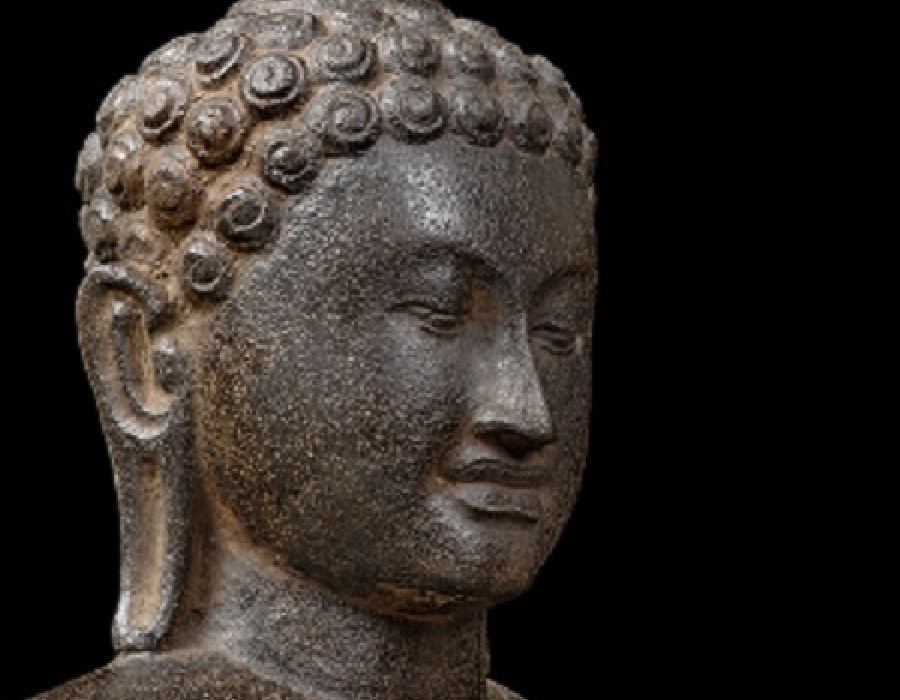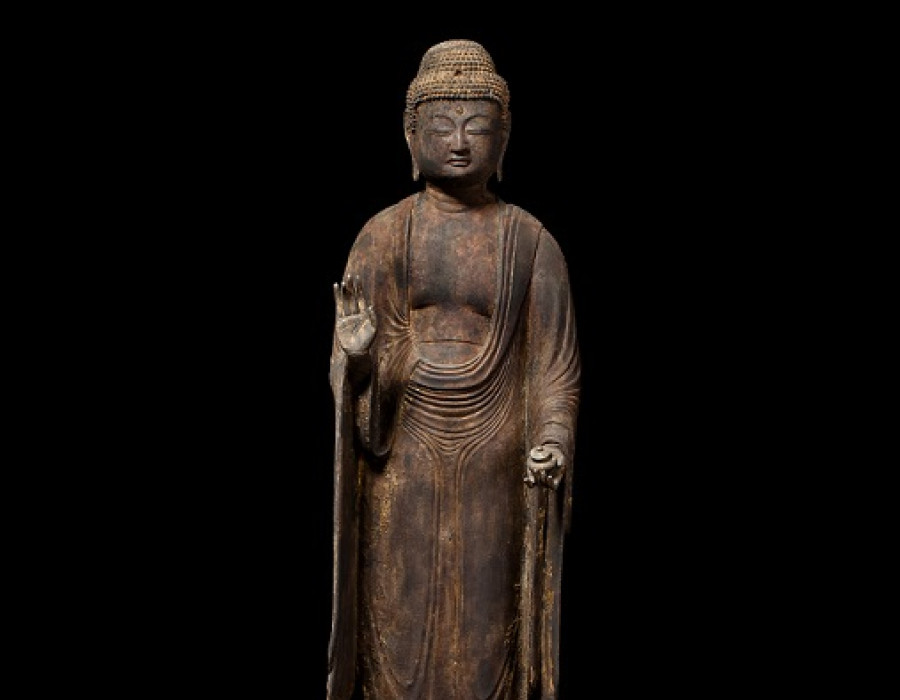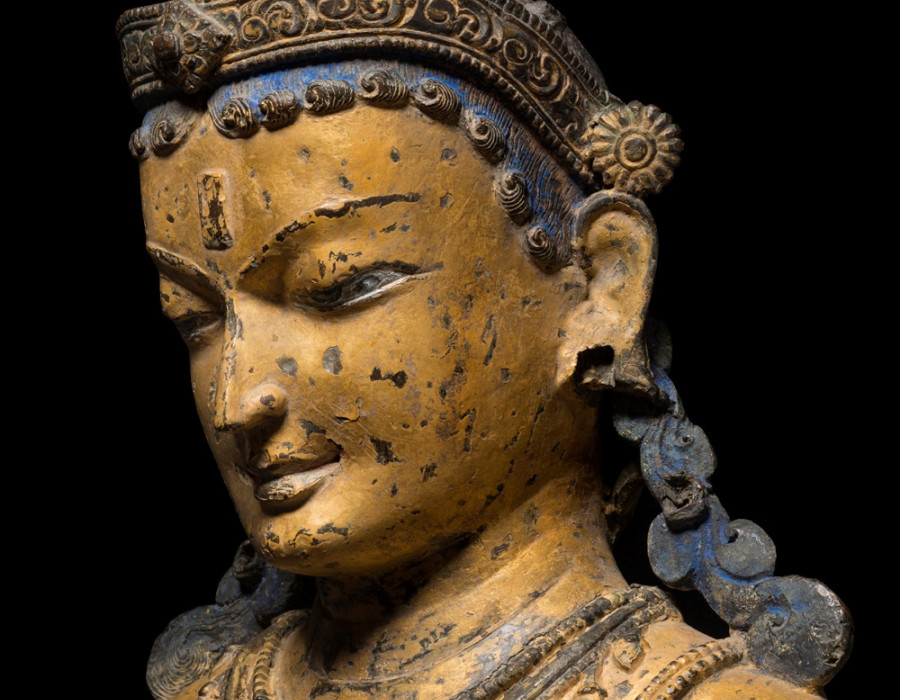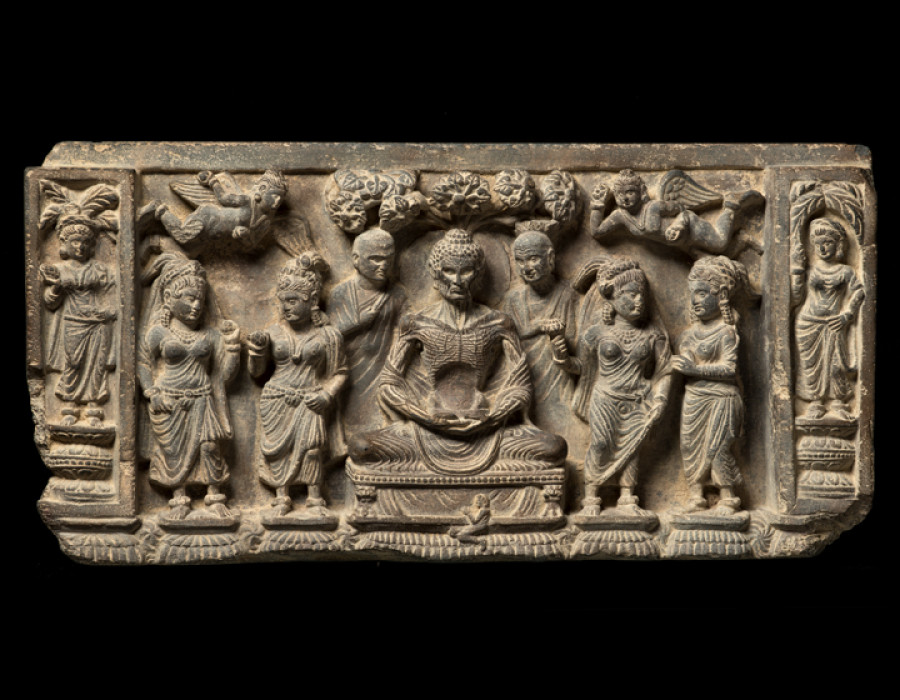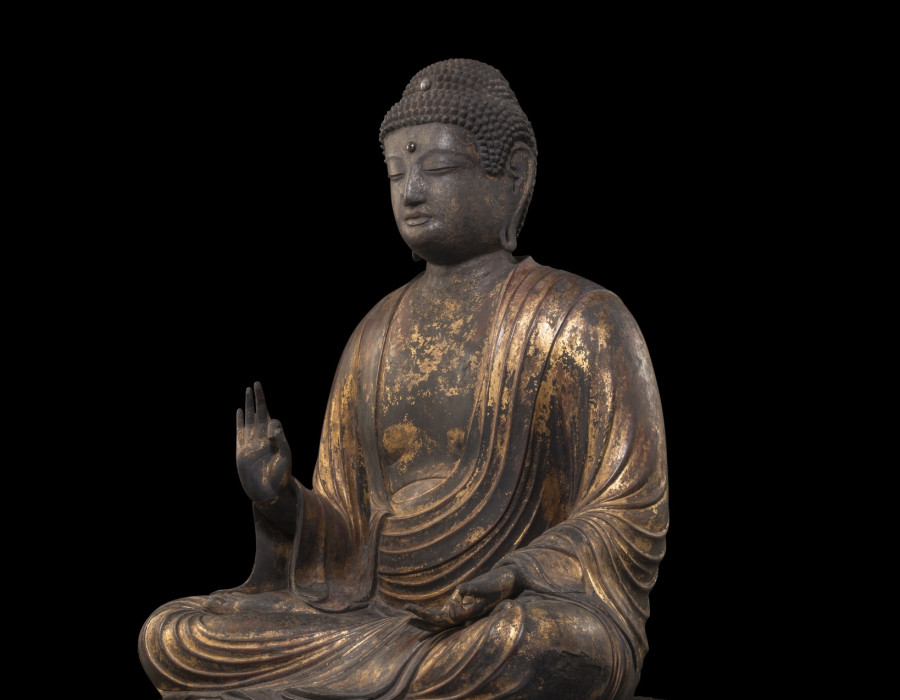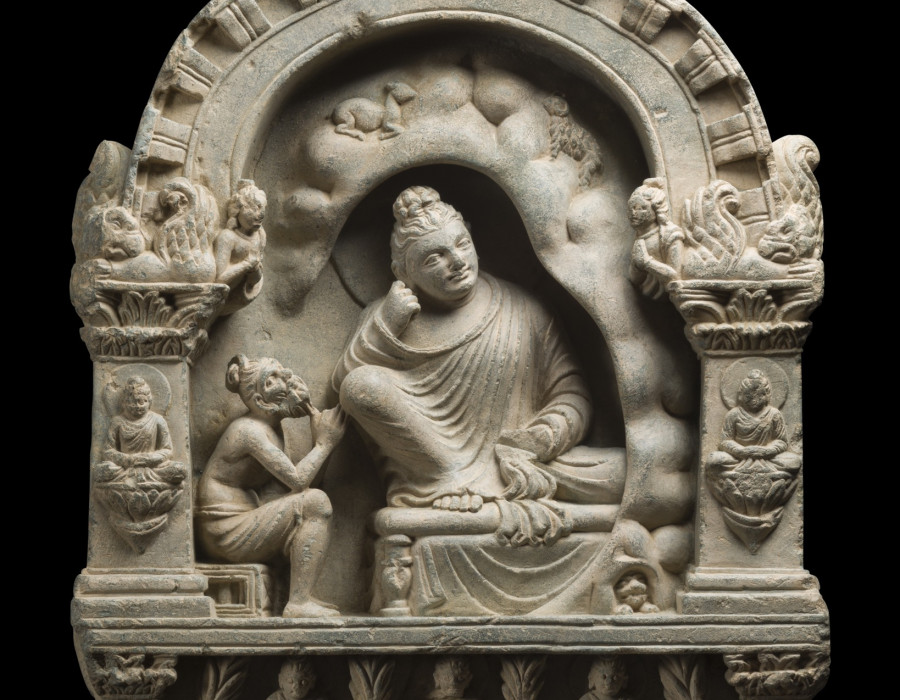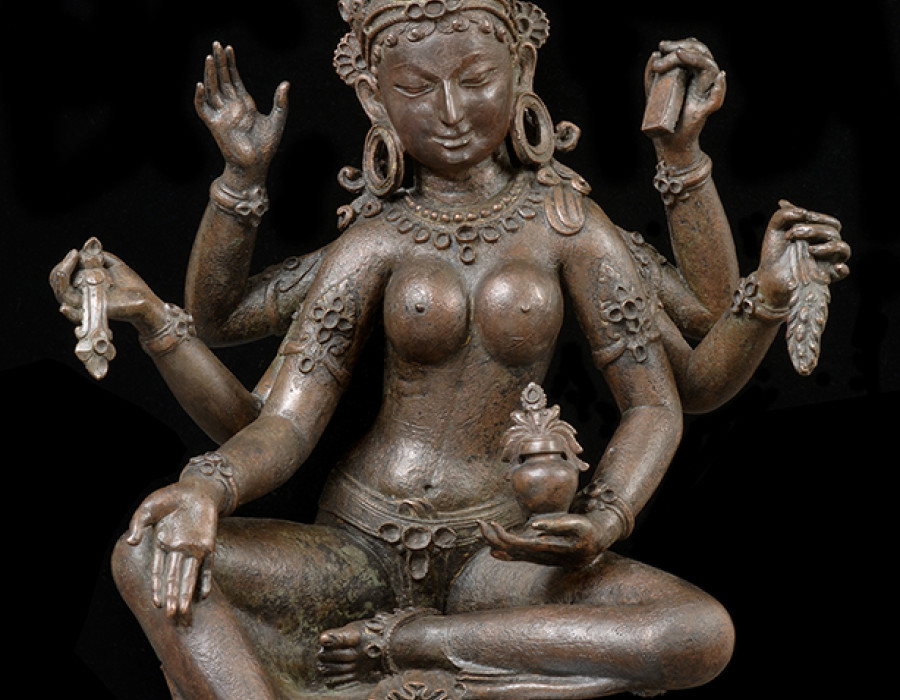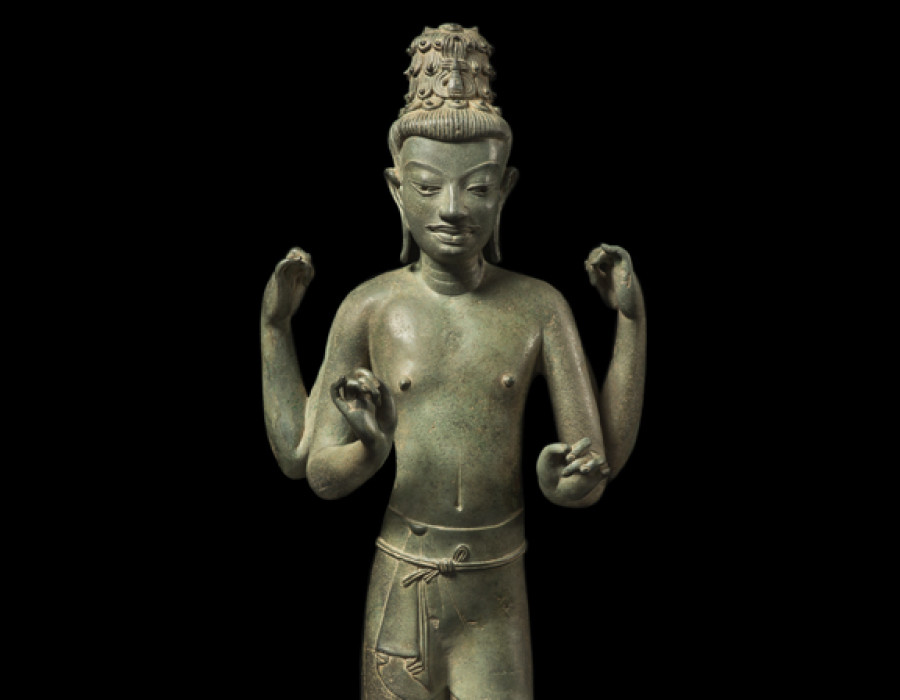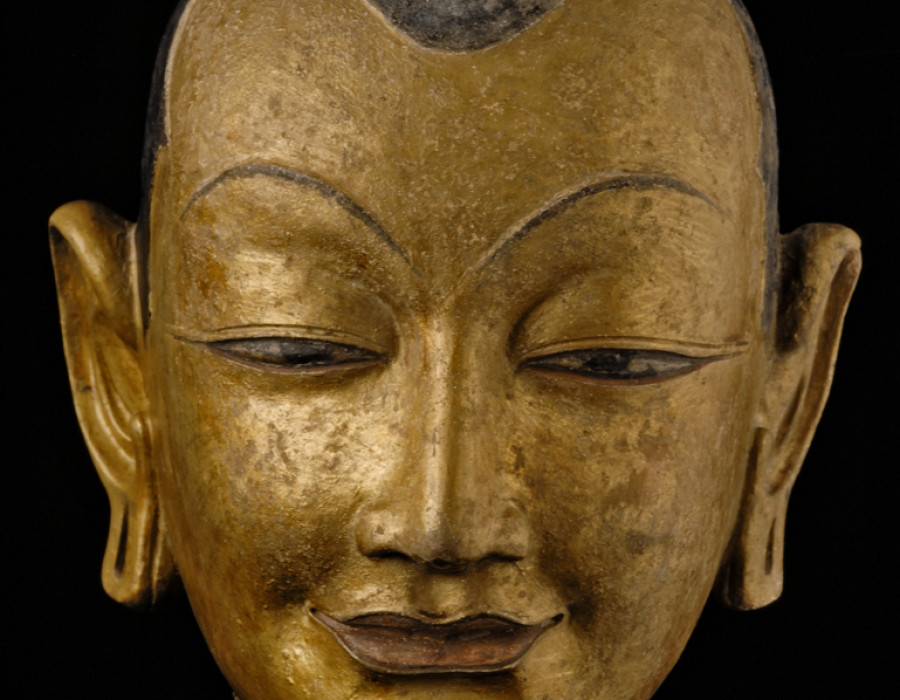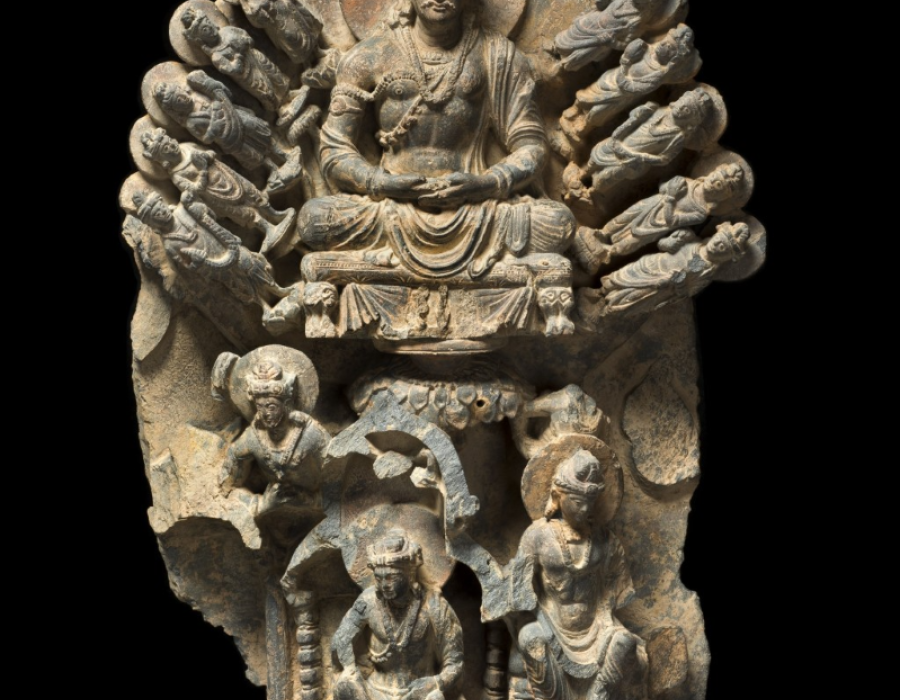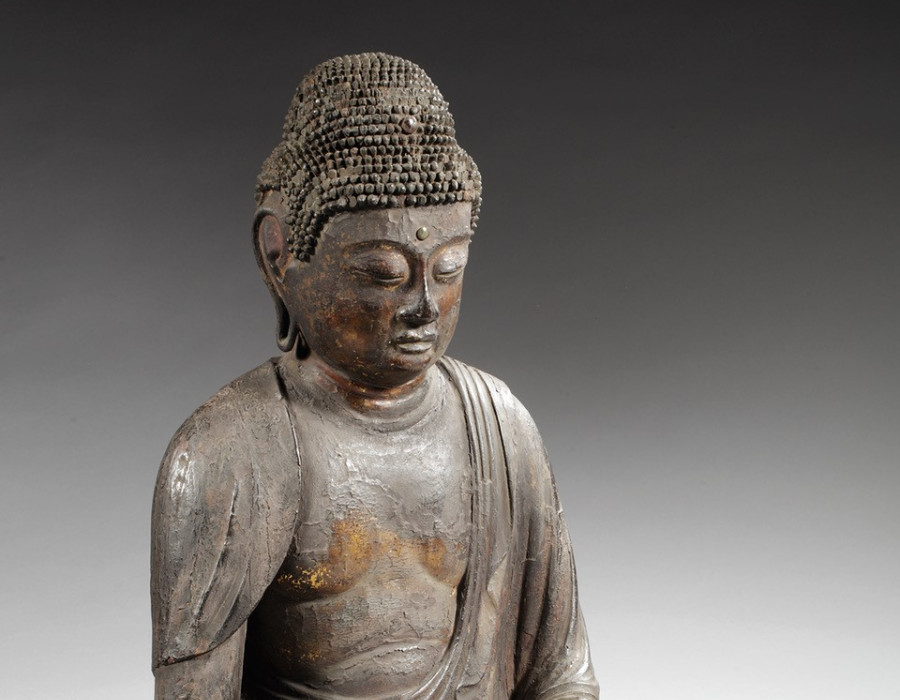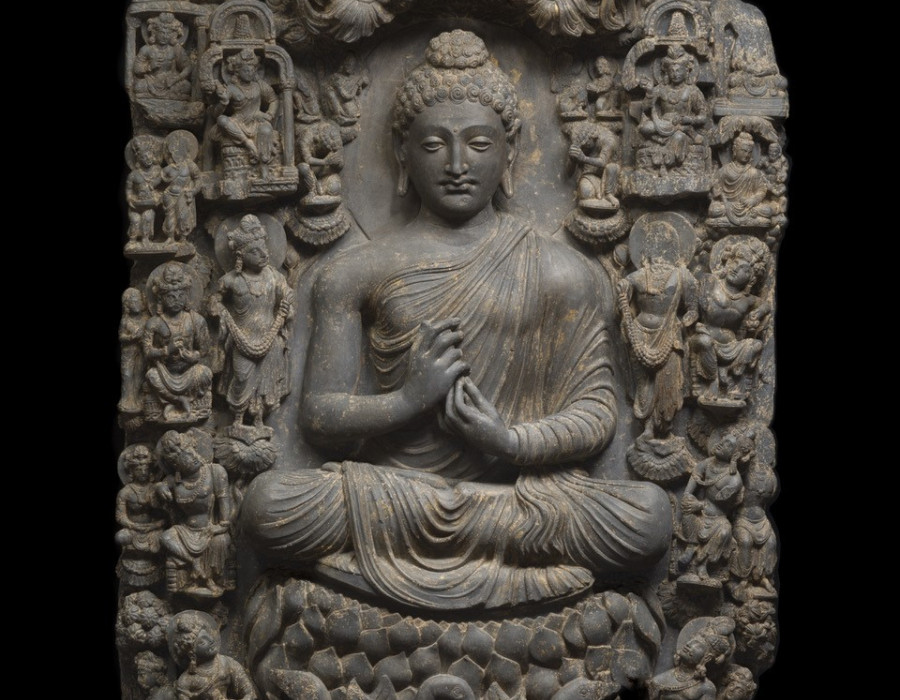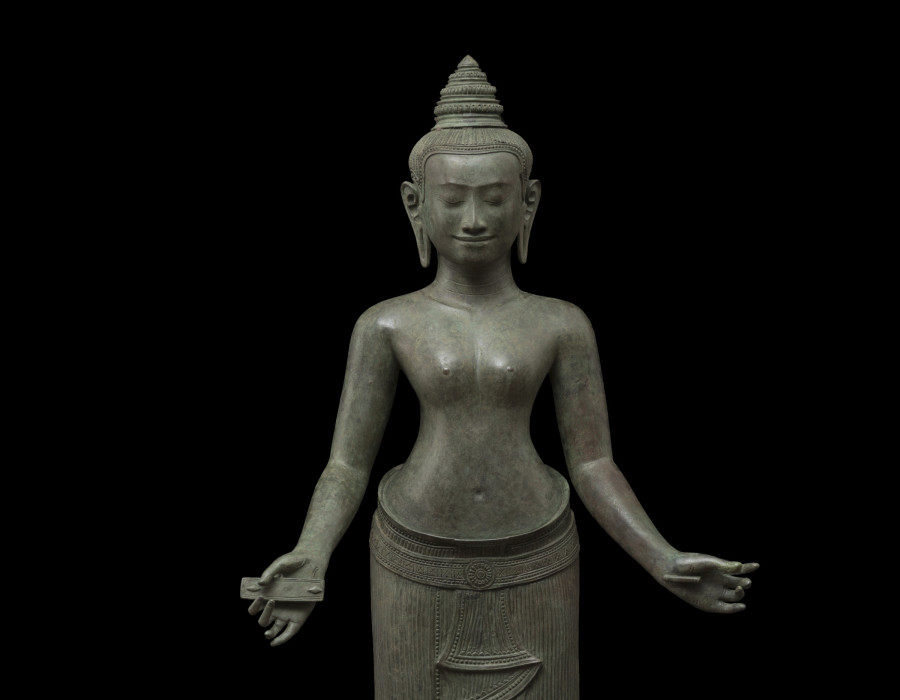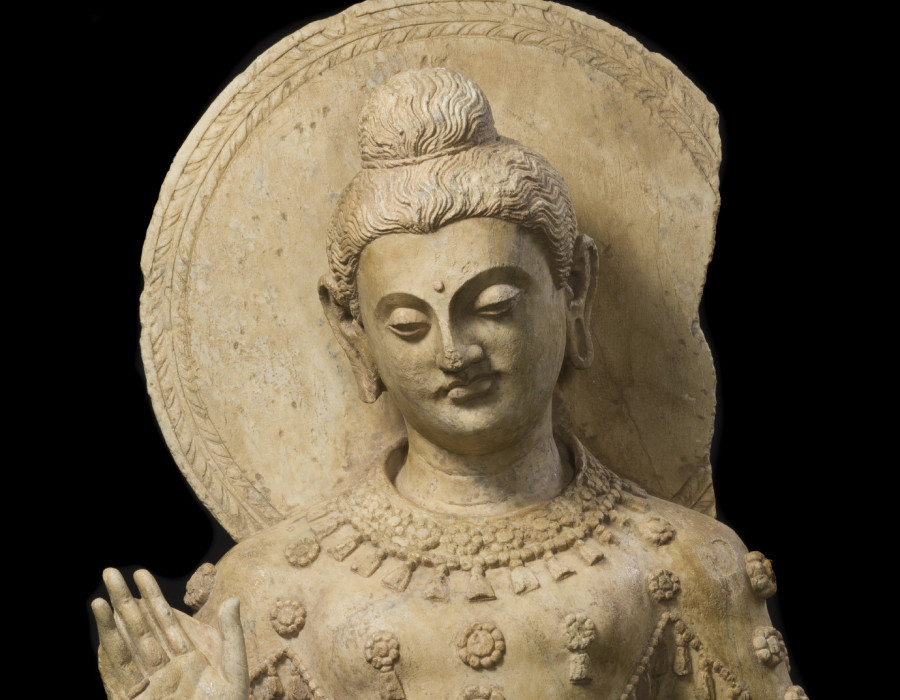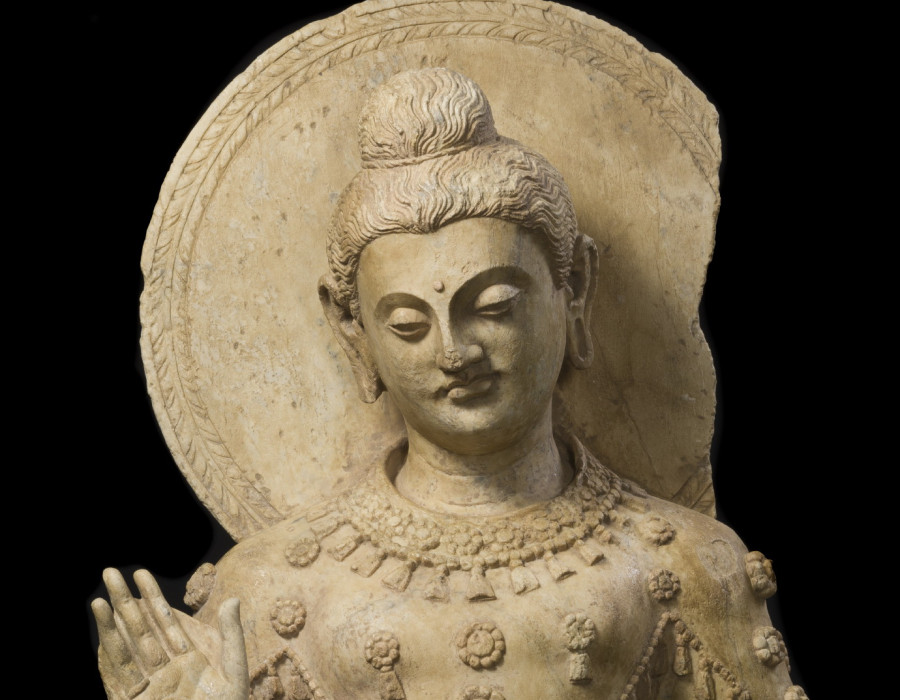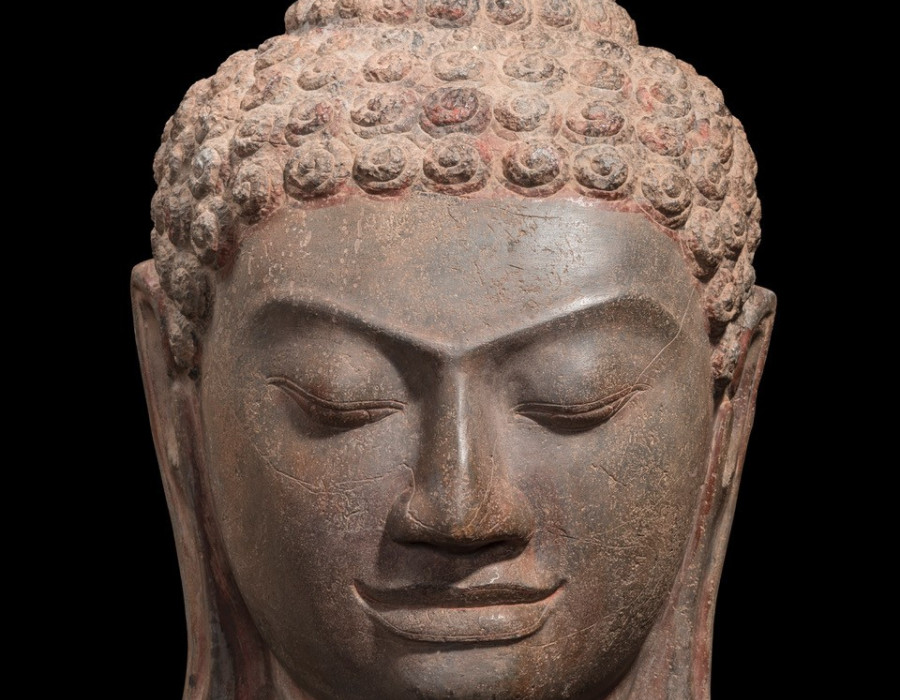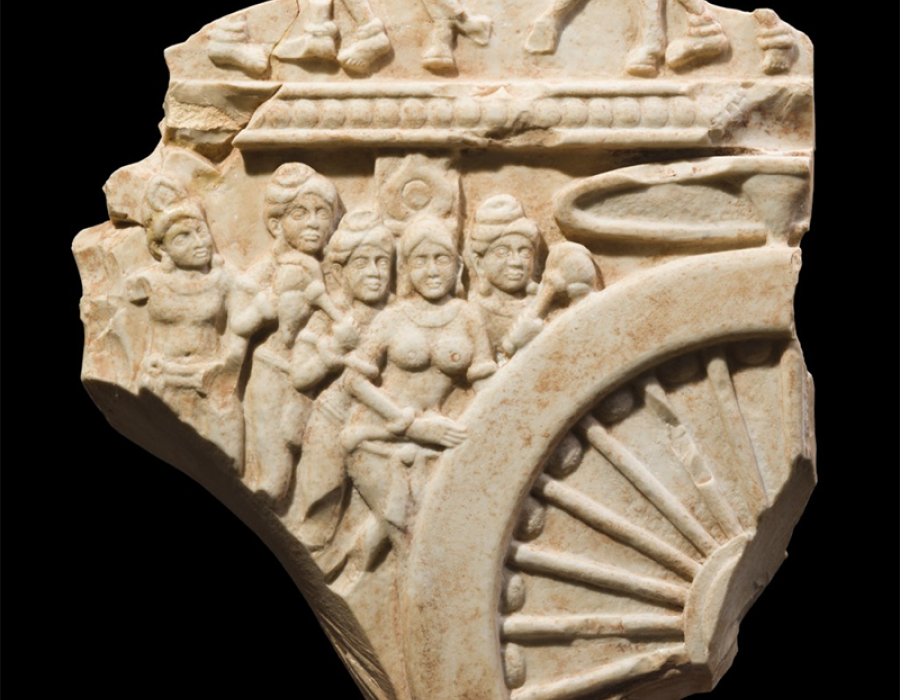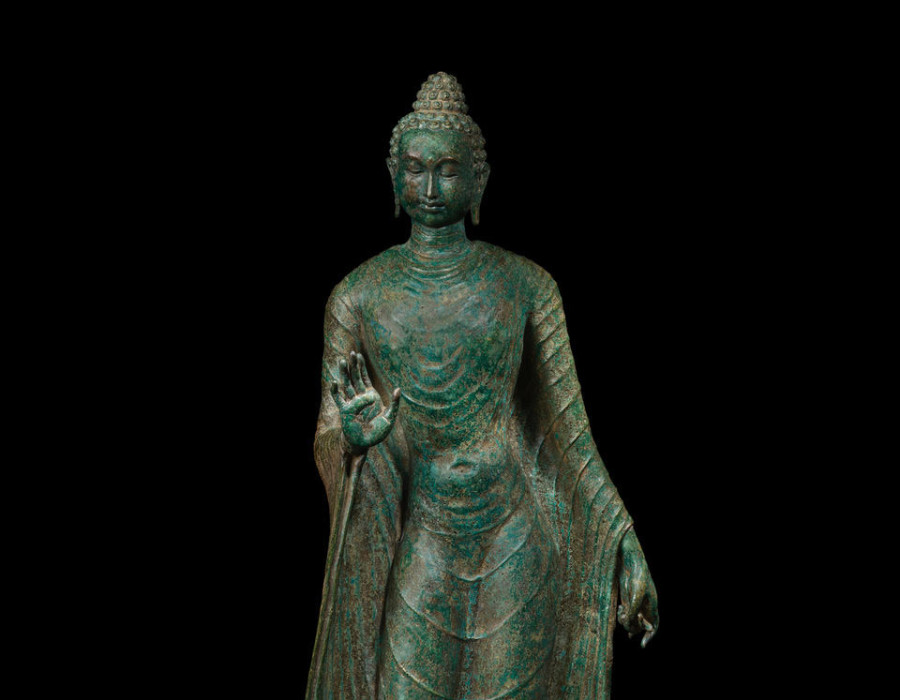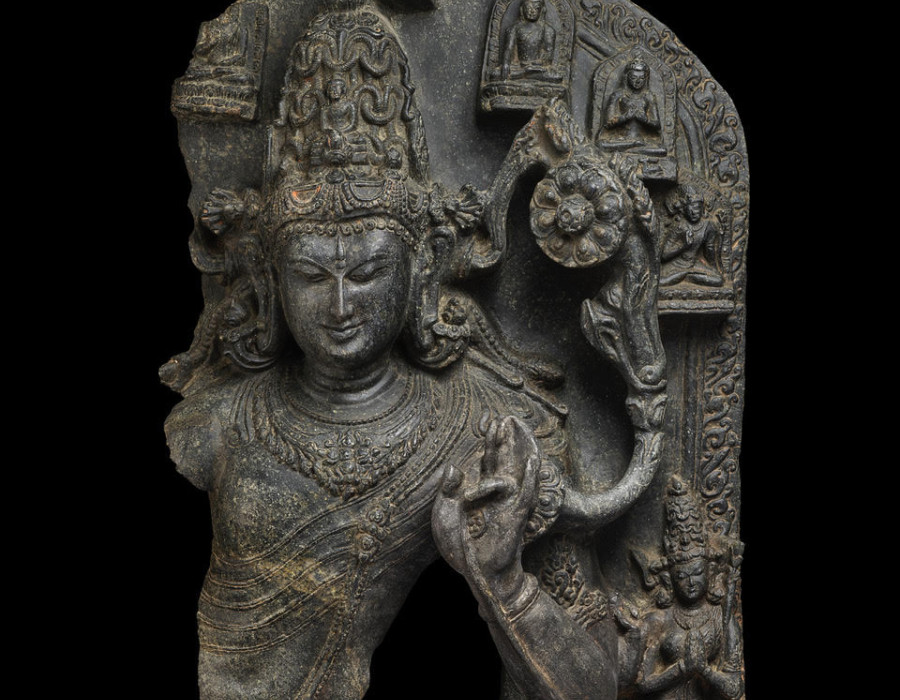
Martin Goodson
Standing Buddha:
Images of Truth
In this extract from a Zen text from the Dun Huang caves, Master Nyuri explains the supernormal powers of The Buddha.

Standing Buddha head-shot
John Eskenazi
Standing Buddha
Greater Gandhara region
4th / 5th century
Stucco with red and black pigmentation
Height : 125cm (49.21")
..........................
Emmon rises and asks
Now I have heard that not only Bodhisattvas but the followers of Other Ways also attain to the five supernormal powers. How do they differ?
Master Nyuri answers
They differ in that the followers of Other Ways believe that there is someone who possesses something whereas Bodhisattvas do not think so. Why not? Because they have fully realized that there is no self.
…

Standing Buddha front
John Eskenazi
Comment to Question and Answer
The five supernormal powers of Other Ways (other religions) are:
To see what is invisible to others;
To hear what is inaudible to others;
To see into the future and to know the past;
To know others’ thoughts;
To appear at will at any place.
But when a monk asked Master Rinzai what were the supernormal powers and the Buddhist teachings on the supernormal powers, Rinzai answered:
‘In the realm of seeing not to be deceived by form;
In the realm of hearing not to be deceived by sounds;
In the realm of smelling not to be deceived by odours
In the ream of tasting not to be deceived by taste;
In the ream of thinking not to be deceived by notions.
That is the truly independent man.’
These two versions clearly illustrate the difference between what followers of Other Ways consider to be the supernormal powers and the Buddhist teachings of the powers of a Bodhisattva. The former assume a self that attains and possesses these powers, whereas in the Bodhisattva it is the functioning of the not-self (or true nature) which does not need o be attained nor is bound by what has to be attained.
(The Ceasing of Notions: A Zen Text from the Tun-Huang Caves - Comments by Soko Morinaga Roshi; pub. Zen Centre, London 1988)
Images of Truth
Buddhist art and iconography

